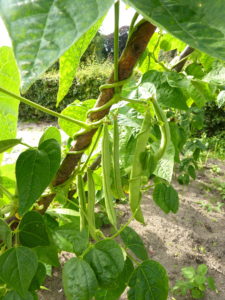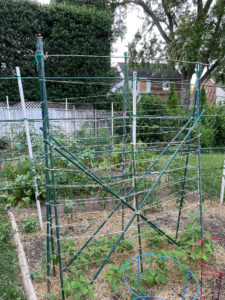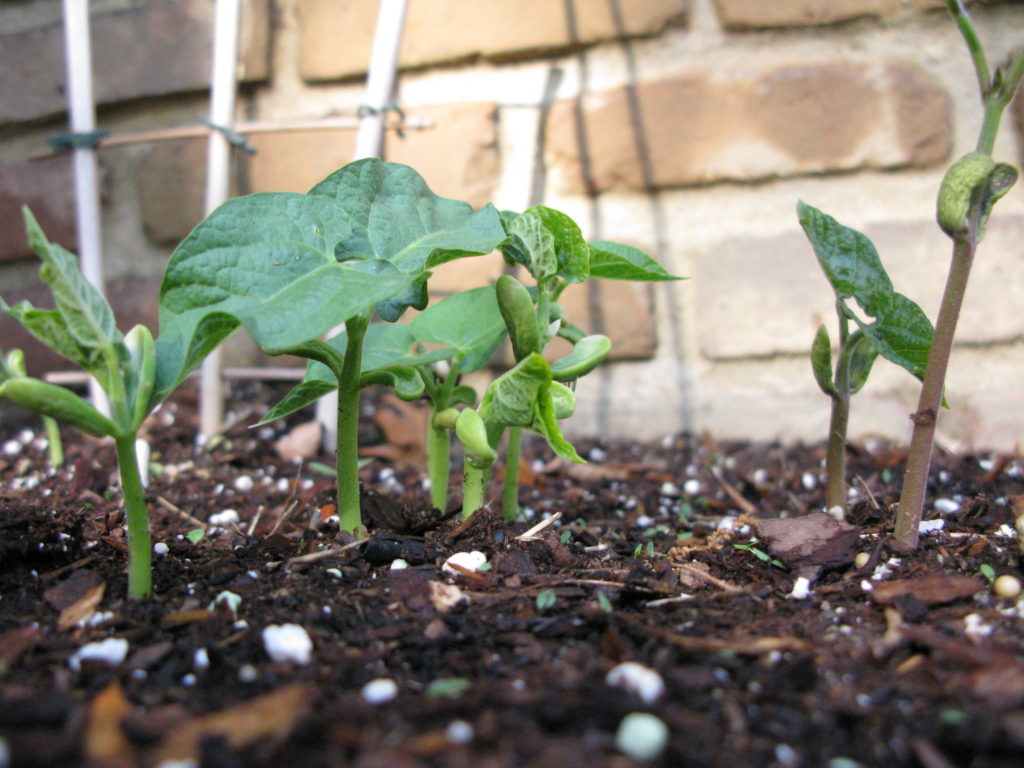There are many types of green beans, including string beans, haricot vert, snap beans, long beans and more! Prior to the 1950’s many beans used to have a plant fiber string that had to be hand removed before eating. This is where string beans got their name. After the 1950’s, this string was bred out of many types of green beans through cultivating stringless hybrid varieties.
Christopher Columbus is credited with bringing green beans back to Europe where they were first cultivated in the Mediterranean area. Green beans were spread and consumed across America by Native American tribes. It is believed that the first green beans were cultivated by the Incas in South America. All types of beans are popular side dishes due to their ability to pair with so many different kinds of seasonings and butters. Green beans are packed with fiber, antioxidants, vitamin K, and calcium.
Planting Green Beans

All green bean varietals should be planted after the last frost and are annuals. They should be planted in a slightly acidic soil 6.0 – 7.0 pH and require full sun to reach maturity. As with many vegetables, they need nutrient rich well-drained soil. Some beans are grown in bushes, while others grow on the vine and benefit from a trellis.
If planting bush beans sow seeds an inch deep, spaced 1-3 inches apart, with 2-3 feet between rows. Bush varieties grow low to the ground and do not require the support of a trellis. They also grow very quickly and produce their beans in a short time frame. When growing a pole bean, plant your beans 1 inch deep, 4-6 inches apart, and with 2-3 feet between rows containing a trellis. Pole beans can grow up to 8 feet high, or even taller, so make sure you have a large trellis to support their growth.
Green beans can also be grown in containers. If growing the bush bean type, you will need a large container with a diameter of at least 15 inches. If you’re planting a pole bean in a container, the pot should be at least 18+ inches in diameter and have a container trellis or stake to assist the vine with growing. Container placement will be important as green beans need at least 8 hours of sunlight each day.
Harvesting Green Beans

Bush beans grow quickly and can be harvested in about 8 weeks. Bush beans will continue to grow and can be harvested over the course of a month. Pole beans require more time to reach maturity. On average pole beans take about 12 weeks before they can be harvested. While the pole bean might take long to harvest, it has a longer harvesting period. Pole beans once mature can be harvested for 8 weeks. Be sure to pick the beans once they are mature. If they remain on the vine or in the bush for too long they will become hard, tough, and bitter. When harvesting from a pole bean, be sure not to pull them too hard or you risk damaging the vine that is clinging to the trellis. Instead, use shears or two hands to gently remove each bean.
Once harvested, beans can be stored in the fridge as long as they are dry, for about a week. Beans can also be blanched for a few minutes in boiling water, submerged into an ice bath, then frozen in the freezer for a year. Beans are also a great candidate for canning!
Green Bean Pests and Diseases
As with many vegetables, aphids are a common problem. Aphids will chew on the leaves and secrete honeydew that will attract ants and other insects. Aphids are also a primary vector for diseases like bacterial wilt. Apply insecticidal soaps, neem oil, or spray them off with a hose.
Bean mosaic virus will create rings of different colors in a mosaic pattern on the leaves. There is no cure for this virus so the entire plant must be thrown out. Researching disease resistant varieties should help prevent your green beans from becoming infected.
Bean rust is probably the most common disease that can afflict your green beans. This fungus typically grows because of too much moisture, so be sure not to water your green beans from overhead. Pull off infected leaves and try applying neem oil to minimize rust damage. If the fungus is spreading and cannot be contained, discard the entire bean plant.
Leafhoppers are grey wedge-shaped insects that leap onto the plants and suck the nutrients out of the plant. They can also carry diseases that will infect your green beans. Spraying insecticides with pyrethrin should kill off leafhoppers. Be careful while spraying though as you do not want to kill off beneficial insects.
Mexican bean beetles are a common nuisance when planting green beans. Do not confuse these pests with ladybugs. Mexican bean beetles appear similar to ladybugs but will be a light orange color. At the earliest sign of Mexican bean beetles, apply neem oil.

Planning a Green Bean Garden
Planning a green bean garden is easy with Garden Savvy’s garden planner Hortisketch. In Hortisketch, you can lay out your garden, add containers, and trellises, then plant the beans. The dynamic growing calendar will provide you with sow, grow, and harvest information, making it easy to grow beans from start to finish.

Contact Author
 info@gardensavvy.com
info@gardensavvy.com Recent Posts
- Smart Gardening: How Technology Is Revolutionizing Horticulture
- Understanding Gardening Zones: What You Need to Know
- The Right Tools For Your Gardening And Landscaping Needs
- Maximizing Your Harvest: Square Foot Gardening Chart for Beginners
- Holiday Garden Scents: Plants for Natural Aromatherapy in Your Home









